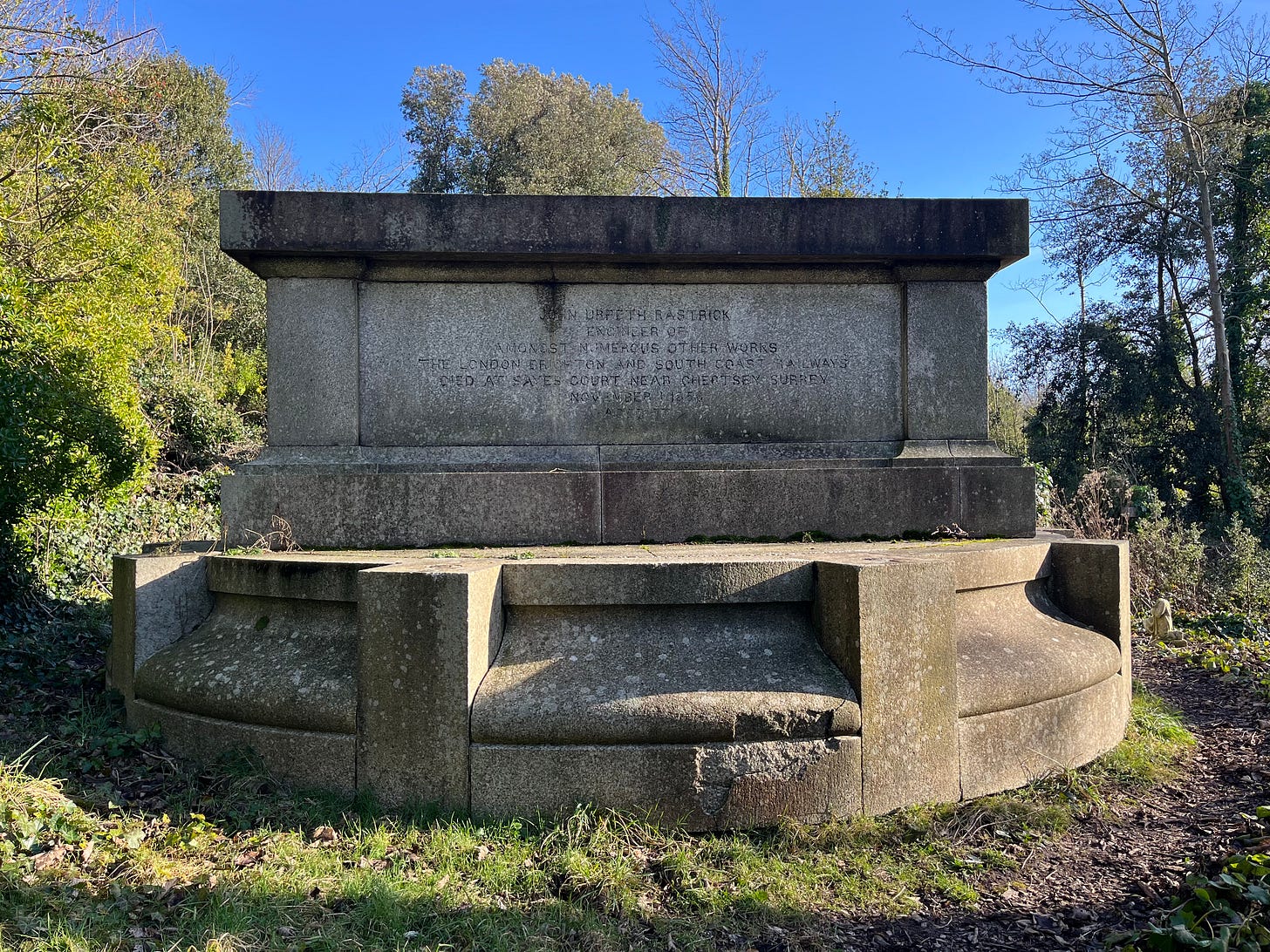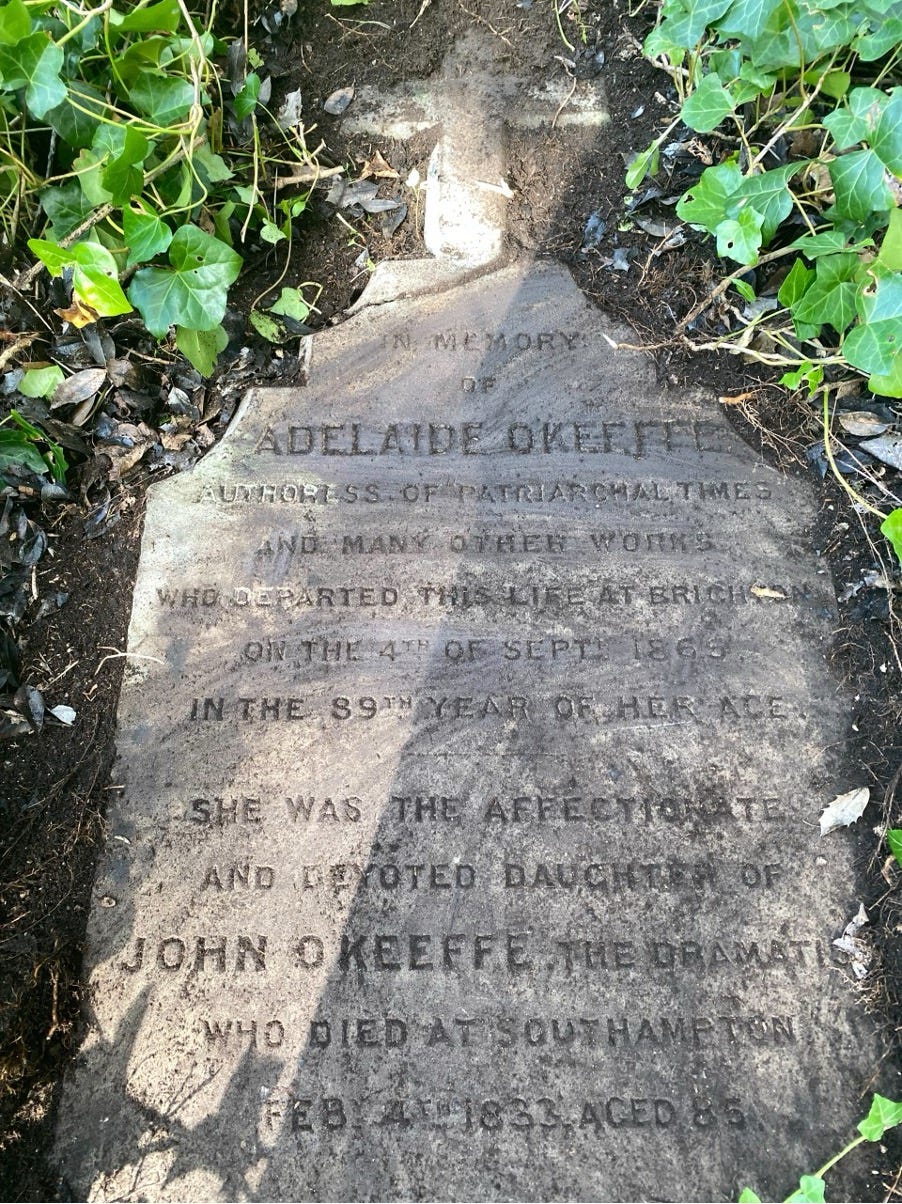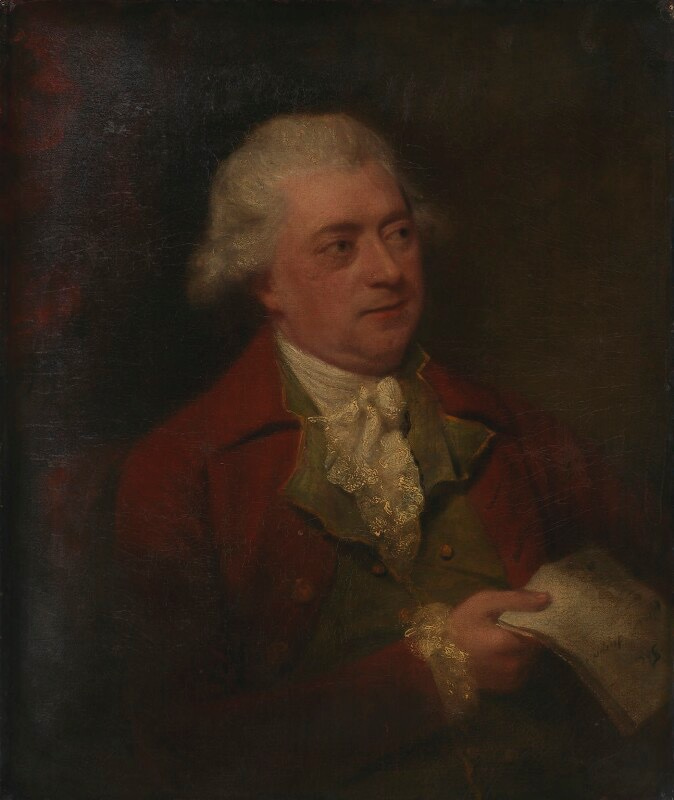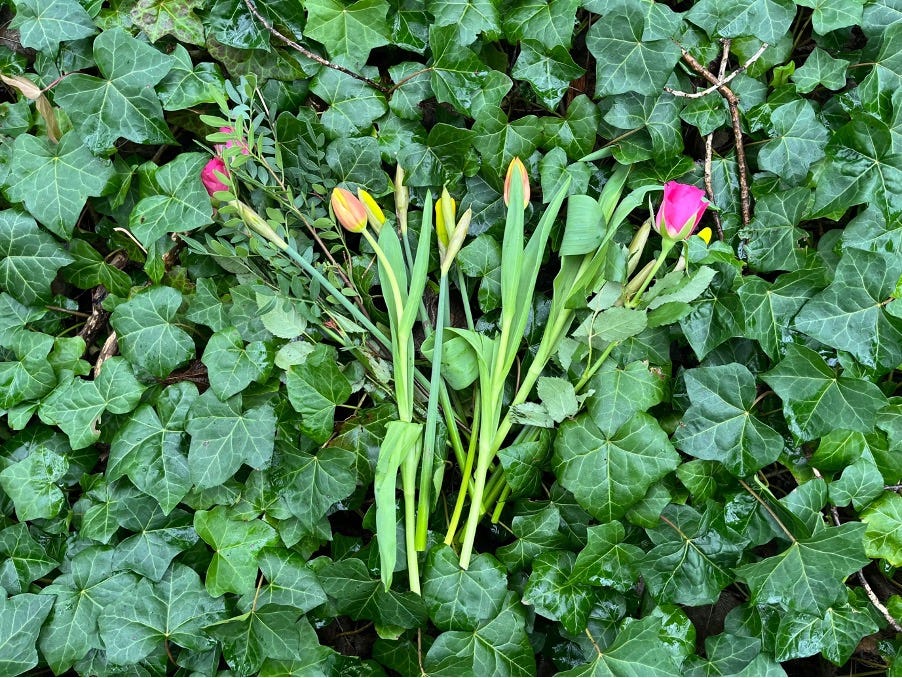Looking for Adelaide
I continue the story of my visit to Brighton's Extra Mural Cemetery and include some links if you’d like to read more about an extraordinary woman and her father.
After finding Eric Stenbock’s grave in Brighton’s Extra Mural Cemetery, I walked up past a Gothic chapel, no longer in use but a symbol of the grandeur of this place when it was built. It was a cold, bright day, and the sun was warming the earth. The garden smelled of new growth. Two herring gulls were tamping the ground to unearth worms. Magpies and crows traded calls.
The state of Victorian cemeteries divides opinion, among the public and those who now have to manage them. Some see their dereliction as a sign of disrespect for the dead. Others accept the decay for its own beauty and welcome these places as a haven for wildlife. There is even a conservation charity, Caring for God’s Acre, devoted to preserving them.1
Above the disused chapel, I passed the grave of John Rastrick, who built the London to Brighton railway line. More accurately, I navigated around it. This 15 ton slab of Cornish granite, designed to represent a giant railway turntable, is so wide that in 1856, one of the entry walls to the cemetery had to be taken down to allow 20 horses to drag it into position. Generations of his family are buried with him. It is the physical embodiment of all that the Extra Mural Company hoped to achieve.
If Rastrick is impossible to ignore, the next person I was searching for proved impossible to find. I was looking for Adelaide O’Keeffe, who died in 1865 and whose presence here was rediscovered in 2021 by a distant relative, writer and historian Lynda O’Keeffe.2 Lynda, a resourceful woman, came armed with garden implements and, with the help of a cemetery worker who she described as ‘a kindly man’, found and uncovered the plot.
Adelaide was born in Dublin in 1776. The family were wealthy Catholics, and her life was comfortable and uncomplicated until her protestant mother had an affair with an actor. After that, her life was never the same again. Her father, John O’Keeffe, sent her to a convent in France when she was seven years old and brought her back just before the French Revolution.
By this time John, a successful actor himself, was blind, after progressively losing his sight after he fell into the River Liffey in Dublin.3 He switched to writing operas, farces and poetry. By all accounts talented and flamboyant, he championed gender equality, female authorship and the abolition of slavery.
Adelaide, at the age of 12, became his amanuensis, a word that in Latin translates as ‘slave at hand’. She was his full time secretary and carer until he died 45 years later. Despite an itinerant life devoted to her father’s needs, she found the time to write 11 novels and poetry collections. Today, to the extent that she is remembered, it is for her poetry for children. Her most famous work is a poem called The Butterfly:
The Butterfly, an idle thing,
Nor honey makes, nor yet can sing,
As do the bee and bird;
Nor does it, like the prudent ant,
Lay up the grain for times of want,
A wise and cautious hoard.
My youth is but a summer's day:
Then like the bee and ant I'll lay
A store of learning by;
And though from flower to flower I rove,
My stock of wisdom I'll improve
Nor be a butterfly.
John O’Keeffe was talented, but also anxious and a depressive and by the time he died in 1833 in Southampton, he was poor and forgotten. Only four people came to his funeral. Adelaide was 57, single, and penniless. She only wrote one further novel and a poetry collection after her father’s death. She drifted around the south west and southern England, living on handouts from the Royal Literary Fund.
The 1861 census lists her as a boarder in Brighton, along with a number of women over half her age. She died four years later, aged 89. Her headstone is impressive but there’s no evidence about who came to her funeral or paid for the burial and headstone.
There are no images of Adelaide. However, there is a portrait of her father, as this account from a friend describes:
‘In changing her residence, Miss O’Keeffe always carried her father’s portrait about with her from place to place, – in loving remembrance of his memory and of her happy home; and she was much gratified when, about twelve months prior to her death, it was taken by the Government for the National Portrait Gallery and placed among those whom the country “has delighted to honour”.’
This tender recollection glosses over Adelaide’s financial situation, and the note on the National Portrait Gallery’s website paints a heartbreaking picture:
‘[The painting] has never been out of the possession of Mr Keeffe and his daughter. She has always taken it about with her since his death and now, having no settled home and feeling extra luggage a trouble, being in her 85th year, she presented it to me last autumn…the great age and increasing infirmities of the poor old lady induced me to put a price upon it (£50) and I shall, of course, immediately hand it over to her’ (letter to HG Hine, 1863)’
Three years on from Lynda’s visit, I couldn’t find any trace of Adelaide’s grave at all. I had been in email contact with Lynda who gave me a rough idea of the location, but the whole area was carpeted in thick, deep ivy. This evergreen plant, a favourite in Victorian cemeteries for its suggestion of immortality, is slowly choking gravestones and paths in all these old graveyards. I walked around trying to sense solidity under my feet, but I couldn’t find it. The ivy kept grasping my boots and pulling me to a stop. I had flowers for her, but I realised that I needed to bring something long and strong and sharp, to penetrate the undergrowth and hear the ring of hard stone underneath.
Frustrated, I went round to the cemetery office, a small flint building back at the entrance to Woodvale Cemetery. When I explained who I was searching for, a council worker looked up the plot on the computer and said he’d come round and help me find the grave. As we were walking back he said, ‘someone else came looking for this grave a few years ago’, and I realised that he was Lynda O’Keeffe’s ‘kindly man’, who turned out to be Seb, the cemetery manager.
He took me back to the area where I had been looking, just behind some obelisks marking graves on a main path, but he had no more luck than me. After fifteen cold, dispiriting minutes, we had to admit defeat. I let Seb go back for his lunch and laid the flowers on the blanket of ivy where we had been standing. I felt desperately sad that Adelaide was buried again in death as she was in life.
When I got home I looked again at Lynda’s photo of Adelaide’s headstone. It was about the size of her father’s portrait. I thought of her carrying it around all those years, as she got progressively older and poorer. How much of a veneration was it, and how much of a burden? When she parted with it, did she feel relief to be finally free of the weight of her father’s legacy? Or ashamed that she inspired the pity that led to payment?
Adelaide is not mentioned in any women’s history of Brighton that I have read, yet what a selfless, talented and resilient person she must have been.
Finally, I appreciate you taking the time to read this, and thanks to everyone who read my first article about Brighton’s Extra Mural Cemetery a fortnight ago. I am so pleased there are so many ‘graveyard crawlers’, as one reader put it, out there. Keep the comments and recommendations coming, I am learning so much!
Next week I’ll write about one more outsider to Brighton who found his final resting place here.








Family history is detective work , a bit of dogged determination, luck, and the help of others. You’ve come across each of these in this lovely narrative. I know it’s not your family history but it is someone’s! One of the positive aspects of looking for information about the deceased is that they aren’t going anywhere. Graves just waiting to be discovered, whether with a memorial stone or not. And the energy or soul of someone that you tap into by looking for them.
At a slight tangent , the burial process in Victorian times is something that is not that well documented. There’s the simple distinction of pauper burial ( although that definition varies from place to place) , but I can’t find much about the undertakers and memorial stonemasons of the period. Was there competition? What was the cost? Given the price of contemporary funerals was a Victorian one equally a substantial priory of savings or income?
If you or any reader knows of the nitty gritty of undertaking, let me know please.
Oh, and sorry to be a pedant but you mention the 1865 Census. A mistype I guess , as the census was 1861 and then 1871…,
How sad a tale. Magical that you should find Seb though!